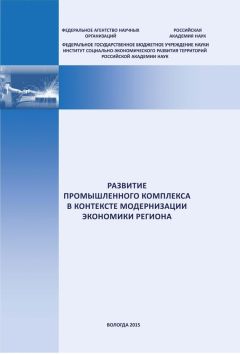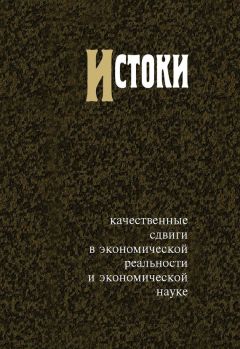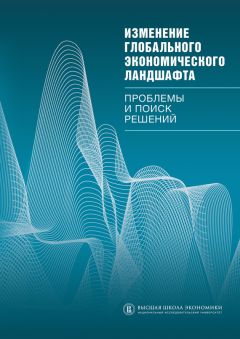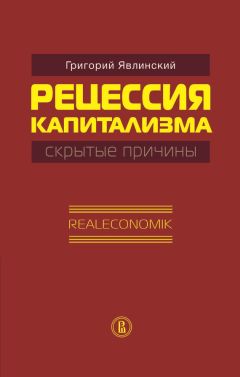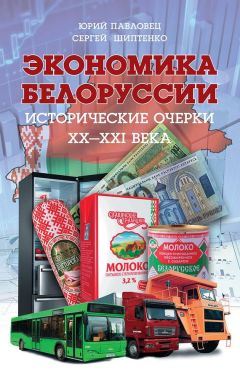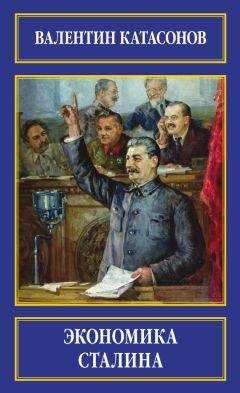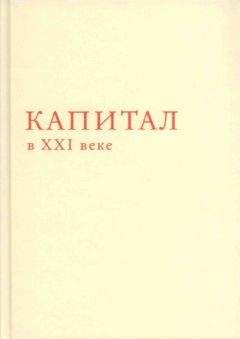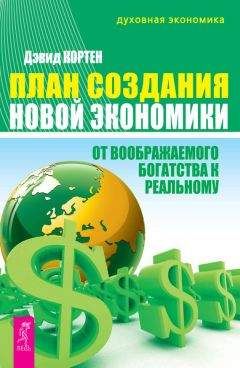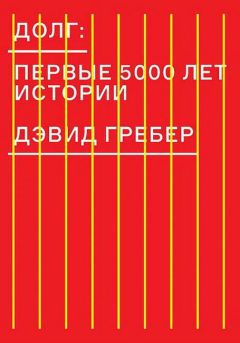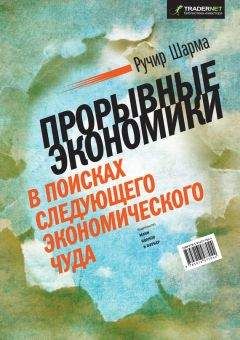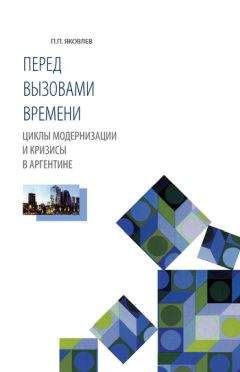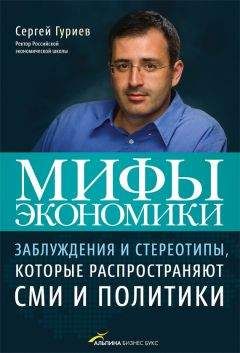Франк Трентманн - Эволюция потребления. Как спрос формирует предложение с XV века до наших дней

Все авторские права соблюдены. Напишите нам, если Вы не согласны.
Описание книги "Эволюция потребления. Как спрос формирует предложение с XV века до наших дней"
Описание и краткое содержание "Эволюция потребления. Как спрос формирует предложение с XV века до наших дней" читать бесплатно онлайн.
139
Maxine Berg, «In Pursuit of Luxury: Global History and British Consumer Goods in the Eighteenth Century», Past & Present 182, no. 1, 2004: 85—142.
140
J. F., The Merchant’s WareHouse Laid Open: Or, the Plain Dealing LinnenDraper. Shewing How to Buy All Sorts of Linnen and Indian Goods (London, 1696), A3, 7, 27, 29–30. О разнообразии узоров, доступных даже более бедным потребителям, см. John Styles: Threads of Feeling: The London Foundling Hospital’s Textile Tokens, 1740—70 (London, 2010).
141
О Франции: Roche, Culture of Clothing, 12639. О шелке см. Natalie Rothstein: «Silk in the Early Modern Period, c. 1500–1780», из: D. T. Jenkins, The Cambridge History of Western Textiles (Cambridge, 2003), 528—61; а также Farrell, «Silk and Globalization in Eighteenth-century London». См. также: S. Horrell, J. Humphries & K. Sneath, «Consumption Conundrums Unravelled», из: Economic History Review (online version 17 Dec. 2014).
142
Roger-Pol Droit, How are Things? A Philosophical Experiment, trans. Theo Cuffe (London, 2005), 52.
143
Четырнадцать дукатов в 1546 году, см. Patricia Allerston: «Clothing and Early Modern Venetian Society», из: Continuity and Change 15, no. 3, 2000: 367—90, на с. 372.
144
1765, цитата из: Beverly Lemire, Fashion’s Favourite: The Cotton Trade and the Consumer in Britain, 1660–1800 (Oxford, 1991), 94. См. также: Prasannan Parthasarathi & Giorgio Riello, eds., The Spinning World: A Global History of Cotton Textiles, 1200–1850 (Oxford, 2009).
145
Roche, Culture of Clothing, 108—11; а также John Styles, The Dress of the People: Everyday Fashion in Eighteenthcentury England (New Haven, CT, 2007).
146
Andrew Bevan & D. Wengrow, eds., Cultures of Commodity Branding (Walnut Creek, CA, 2010).
147
McKendrick, из McKendrick, Brewer & Plumb, Birth of a Consumer Society, 141.
148
Phyllis G. Tortora & Keith Eubank, Survey of Historic Costume: A History of Western Dress (New York, 1998, 3rd edn), 147—9, 158—60.
149
Цитата из: Om Prakash, «The Dutch and the Indian Ocean Textile Trade», из: Parthasarathi & Riello, eds., The Spinning World, 149.
150
Цитата из: Woodruff D. Smith, Consumption and the Making of Respectability, 1600–1800 (London, 2002), 50.
151
Magazine à la Mode, or Fashionable Miscellany (January 1777), 49–51.
152
McKendrick из: McKendrick, Brewer & Plumb, Birth of a Consumer Society, 43—7.
153
Pomeranz, Great Divergence; для сравнения Prasannan Parthasarathi, «The Great Divergence», Past & Present 176, 2002: 275—93; Robert Brenner & Christopher Isett, «England’s Divergence from China’s Yangzi Delta: Property Relations, Microeconomics and Patterns of Development», из: Journal of Asian Studies 61, no. 2, 2002: 609—22; а также Kenneth Pomeranz, «Standards of Living in Eighteenth-Century China: Regional Differences, Temporal Trends, and Incomplete Evidence», из: Standards of Living and Mortality in Preindustrial Times, eds. Robert Allen, Tommy Bengtsson & Martin Dribe (Oxford, 2005), 23–54.
154
Robert C. Allen, The British Industrial Revolution in Global Perspective (Cambridge, 2009); Robert C. Allen et al., «Wages, Prices and Living Standards in China, Japan and Europe, 1738–1925», GPIH Working Paper no. 1, (2005); а также Stephen Broadberry & Bishnupriya Gupta, «The Early Modern Great Divergence: Wages, Prices and Economic Development in Europe and Asia, 1500–1800», Economic History Review 59, no. 1, 2006: 2—31. Сравните с: Jane Humphries, «The Lure of Aggregates and the Pitfalls of the Patriarchal Perspective: A Critique of the High Wage Economy Interpretation of the British Industrial Revolution», Economic History Review 66, 2013: 693–714; а также Robert C. Allen, «The High Wage Economy and the Industrial Revolution: A Restatement», Economic History Review 68, no. 1, 2015: 1—22.
155
Kenneth Pomeranz, «Chinese Development in Longrun Perspective», из: Proceedings of the American Philosophical Society 152, 2008: 83—100; а также Prasannan Parthasarathi, Why Europe Grew Rich and Asia Did Not: Global Economic Divergence, 1600–1850 (Cambridge, 2011), 37–46.
156
Bozhong Li, «Xianminmen chi de bucuo», Deng Guangming xian-sheng bainian shouchen jinian wenji (2008). Выражаю благодарность Бочжун Ли за английскую версию этой статьи. Данные по опиуму см.: Zheng Yangwen, The Social Life of Opium in China (Cambridge, 2005).
157
В Японии в период Эдо было, возможно, больше равенства, однако она была закрыта для международной торговли. Уровень жизни японцев в этот период может недооцениваться историками, так как многие крестьянские семьи получали земельные паи, а также дополнительный доход приносили в семью жены и дети, и кроме того, были возможности заниматься несельскохозяйственными подработками. См.: Osamu Saito, «Growth and Inequality in the Great and Little Divergence Debate: A Japanese Perspective», Economic History Review 68, 2015: 399–419; а также Osamu Saito, «Income Growth and Inequality over the Very Long Run: England, India and Japan Compared», (2010), по ссылке: http://src-h.slav.hokudai.ac.jp/rp/publications/no02/ P1-C1_Saito.pdf.
158
Neil McKendrick, «Home Demand and Economic Growth», из: N. McKendrick, ed., Historical Perspectives (London, 1974), 209.
159
Daniel Defoe, Everybody’s Business is Nobody’s Business (1725), Defoe’s Works, Vol. II (London, 1854 edn), 499 f., 504.
160
См. Styles, Dress of the People.
161
Jan De Vries, «The Industrial Revolution and the Industrious Revolution», Journal of Economic History 54, no. 2, 1994: 249—70.
162
Ссылаюсь на: Craig Muldrew, Food, Energy and the Creation of Industriousness: Work and Material Culture in Agrarian England, 1550–1780 (Cambridge, 2011).
163
Hans-Joachim Voth, Time and Work in England, 1750–1830 (Oxford, 2001). Действительно ли у рабочих позднего Средневековья было так много свободного времени, вопрос спорный; см.: Gregory Clark & Ysbrand van der Werf, «Work in Progress? The Industrious Revolution», Journal of Economic History 58, no. 3, 1998: 830—43.
164
Frederic Morton Eden, The State of the Poor: Or, an History of the Labouring Classes in England (London, 1797), Vol. II, 87—8.
165
Julie Marfany, «Consumer Revolution or Industrious Revolution? Consumption and Material Culture in Eighteenthcentury Catalonia»; об ограниченном числе новых предметов см.: J. Torras & B. Yun, eds., Consumo, condi-ciones de vida y comercialización: Catalunˇa y Castilla, siglos XVII–XIX (Castile and León, 1999); Jan De Vries, «Peasant Demand Patterns and Economic Development: Friesland 1550–1750», из: European Peasants and Their Markets, eds. W. N. Parker & E. L. Jones (Princeton, NJ, 1975); а также Mark Overton, Jane Whittle, Darron Dean & Andrew Hann, Production and Con-sumption in English Households, 1600–1750 (London, 2004).
166
Ogilvie, «Consumption, Social Capital, and the «Industrious Revolution» in Early Modern Germany».
167
Цитата из: DuPlessis, Transitions to Capitalism in Early Modern Europe, 36.
168
Regina Grafe, Distant Tyranny: Markets, Power and Backwardness in Spain, 1650–1800 (Princeton, NJ, 2012).
169
Fernando Carlos Ramos Palencia, «La demanda de textiles de las familias castellanas a finales del Antiguo Régimen, 1750–1850: ¿Aumento del consumo sin industri-alización?», из: Revista de historia económica 21, no. S1, 2003: 141—78; а также Torras & Yun, eds., Consumo, condiciones de vida y comercialización.
170
Girolamo Benzoni, La historia del Mondo Nuouo (1572 edn; 1st edn, Venice, 1565), 103, перевод мой.
171
George Sandys, Travels (1615), цитата в: Anon., The Vertues of Coffee (London, 1663), 8, reprinted in Markman Ellis, ed., Eighteenth-century Coffee-house Culture, Vol. IV (London, 2006).
172
J. H. Bernadin de Saint-Pierre, Voyage à l’Îsle de France (1773).
173
Sidney Mintz, Sweetness and Power: The Place of Sugar in Modern History (New York, 1985).
174
Arjun Appadurai, ed., The Social Life of Things: Commodities in Cultural Perspective (Cambridge, 1986). См. также: Robert J. Foster, «Tracking Globalization: Commodities and Value in Motion», из: Handbook of Material Culture, eds. Christopher Tilley, et al. (London, 2006); Felipe Fernández-Armesto, Food: A History (London, 2002).
175
Elias, The Civilizing Process. Габриель Тард сформулировал похожую модель «сверху вниз» еще в 1890-е.
176
Jürgen Habermas, The Transformation of the Public Sphere (Cambridge, 1989; 1st German edn, Germany, 1976).
177
Wolfgang Schivelbusch, Tastes of Paradise: A Social History of Spices, Stimulants and Intoxicants (New York, 1992).
178
Mintz, Sweetness and Power.
179
Сравните с более евроцентрической трактовкой: Fernand Braudel, The Structures of Everyday Life (New York, 1979/1981), 249—60.
180
Heinrich Barth, Reisen und Entdeckungen in Nord- und Zentralafrika in den Jahren 1849—55 (Wiesbaden, 1858/1980), 238, перевод мой.
181
Antonio de Alcedo, 1786, цитата из: Ross W. Jamieson, «The Essence of Commodification: Caffeine Dependencies in the Early Modern World», Journal of Social History, 2001: 269—94, 278. См. также: William Gervase Clarence-Smith, Cocoa and Chocolate, 1765–1914 (London, 2000); а также William Gervase Clarence-Smith & Steven Topik, eds., The Global Coffee Economy in Africa, Asia and Latin America, 1500–1989 (Cambridge, 2003).
182
Johann Kaspar Riesbeck, 1780, цитата в: Christian Hochmuth, Globale Güter – lokale Aneignung: Kaffee, Tee, Schokolade und Tabak im frühneuzeitlichen Dresden (Konstanz, 2008), 64, перевод мой.
183
Roman Sandgruber, Bittersüße Genüße: Kulturgeschichte der Genußmittel (Vienna, 1986), 80f.
184
Специальный импорт чая составил 540 тонн в 1724 году, однако при одинаковом весе чайные листья производят в четыре раза больше напитка. При подсчете я учитывал потерю веса при обжарке. Подсчеты основываются на данных по специальному импорту из: Elizabeth Boody Schumpeter, English Overseas Trade Statistics 1697–1808 (Oxford, 1960), таблица XVIII.
185
Здесь и далее см. Jamieson, «Essence of Commodification», Marcy Norton, «Tasting Empire: Chocolate and the European Internalization of Mesoamerican Aesthetics», American Historial Review 111, no. 3, 2006: 660—91; Michael D. Coe & Sophie D. Coe, The True History of Chocolate (London, 1996); а также Kenneth F. Kiple & Kriemhild Ornelas, eds., The Cambridge World History of Food, 2 vols. (Cambridge, 2000).
186
Jacob Spon, De l’usage, du caphé, du thé, et du chocolate (Lyon, 1671); я цитирую современный английский перевод: John Chamberlayne, The Manner of Making Coffee, Tea and Chocolate (London, 1685), переизданный в: Ellis, ed., Eighteenth-century Coffee-house Culture, Vol. IV, 105—11.
Подписывайтесь на наши страницы в социальных сетях.
Будьте в курсе последних книжных новинок, комментируйте, обсуждайте. Мы ждём Вас!
Похожие книги на "Эволюция потребления. Как спрос формирует предложение с XV века до наших дней"
Книги похожие на "Эволюция потребления. Как спрос формирует предложение с XV века до наших дней" читать онлайн или скачать бесплатно полные версии.
Мы рекомендуем Вам зарегистрироваться либо войти на сайт под своим именем.
Отзывы о "Франк Трентманн - Эволюция потребления. Как спрос формирует предложение с XV века до наших дней"
Отзывы читателей о книге "Эволюция потребления. Как спрос формирует предложение с XV века до наших дней", комментарии и мнения людей о произведении.








